The world would be a different place without our buzzing friends, the bees. These winged insects are what are known as pollinators and they impact our food sources immensely. They help our plants to create the food we need to grow in order to survive and thrive with healthy fruits, vegetables, and others. They pollinate things like apple trees and blueberry shrubs, broccoli plants and avocados – even coffee. Approximately 75% of the world’s crops rely on pollinators, which means we owe these insects a great deal of gratitude.
And one way we can show that gratitude is by providing them specially crafted spaces called pollinator gardens. In this case, as we study the effects, the plants, the types of bees, and more, we’ll be looking specifically at bee gardens and how to create a healthy, helpful, happy one in your space.
What is a Bee Garden?
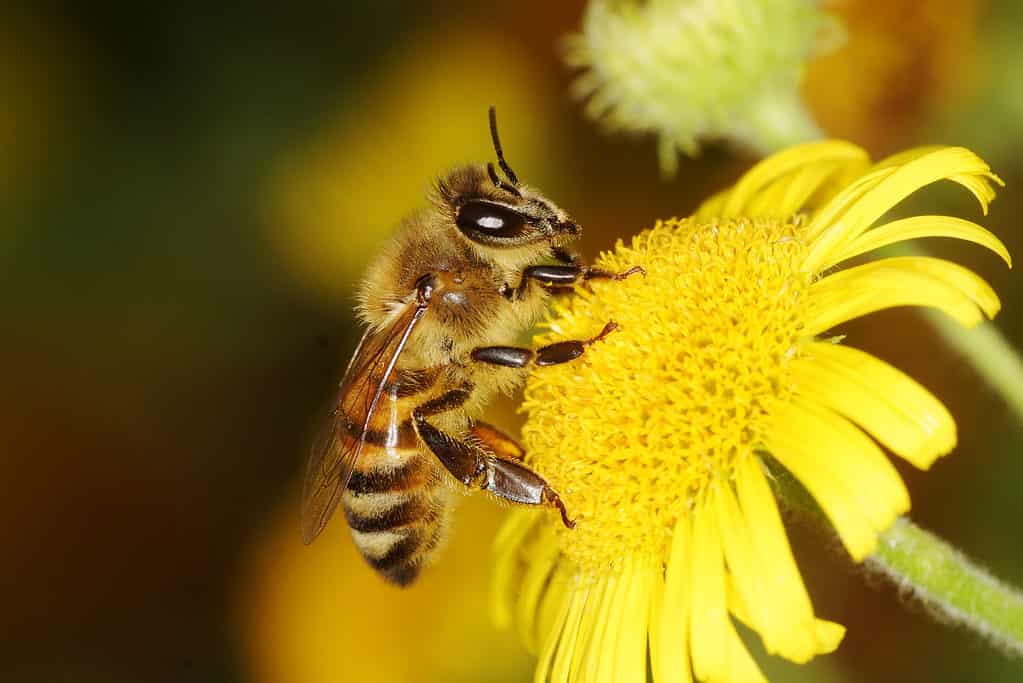
©Maciej Olszewski/Shutterstock.com
First off, let’s get this definition down: a bee garden is an outdoor space designed specifically to attract and care for the needs of various types of bees. You may craft the space to entice specific species and types of bees or you choose to create a more broadly appealing space – your choice.
A bee garden is crafted through several things, particularly choosing the right kinds of plants, trees, and shrubs, providing a water source (or two), nesting areas, and sheltering spaces.
In many cases, bee gardens may simply be pollinator gardens, though, which is more broadly created to attract pollinators of all kinds in your region. We’ll look at this idea more below so that you can determine the best plan of action for your space.
How Do Bee Gardens Help Bees?
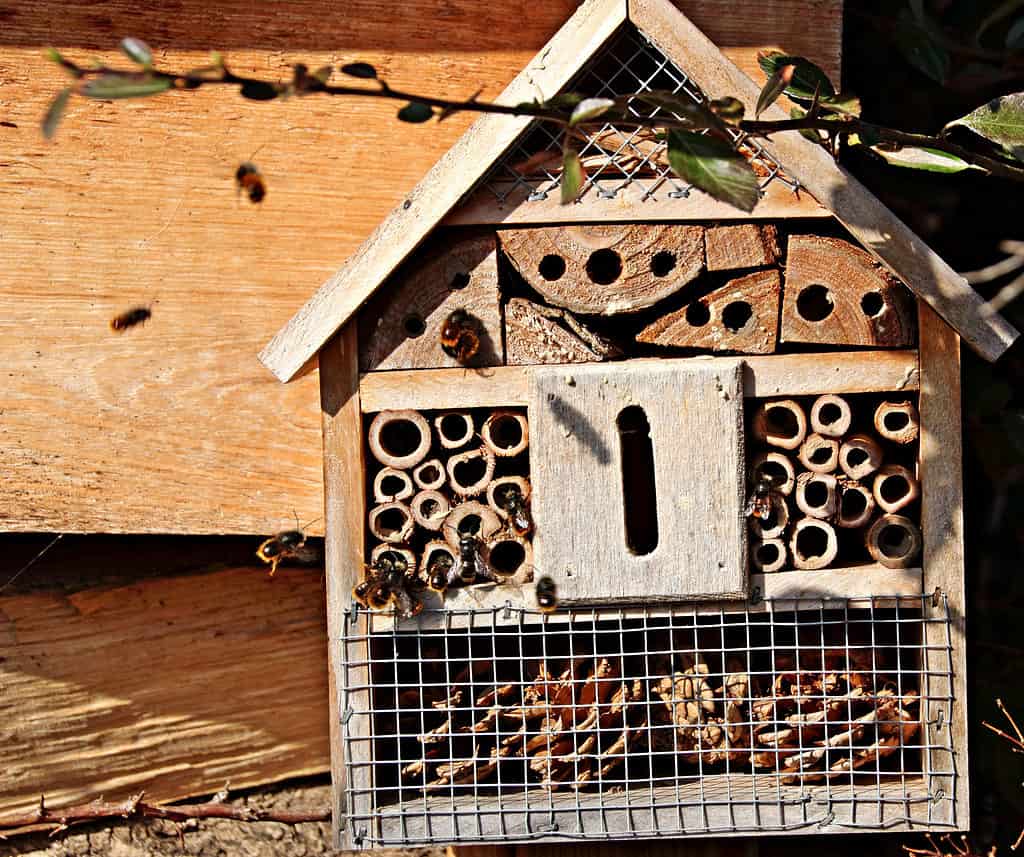
©iStock.com/Alexander Ließ
Bee gardens have several purposes, though the ultimate result is that they help in bee conservation and reproduction.
- They are a welcoming space where wild bees may find food, water, and shelter.
- This helps bees find safety for pollinating plants, which results in plenty of food for the given hive(s) frequenting your garden.
- This also helps bee find safe spaces for permanent or semi-permanent residence.
- They also provide for other needs such as shade, water, and resting spaces.
The world used to have many such places for bees in the wild – wildflower fields, forested thickets with plentiful plants, meadows, mountainsides with flowering plants, etc. But as humans have taken more and more land for housing, industrial complexes, deforestation, and others, bees have had fewer and fewer places to call home in the wild and fewer food sources. In the United Kingdom, for example, 97% of the wildflower fields were lost between 1930 and 2017. Much of the rest of the world reflects this kind of significant loss, which has created this great vacuum and therefore decline in the world’s bee population.
Bee gardens specifically work to help meet this need on a small scale, though, of course, anyone with the land options is highly encouraged to provide as large a space as possible for healthy reproduction and safety for bees.
Why Should You Plant a Bee Garden?
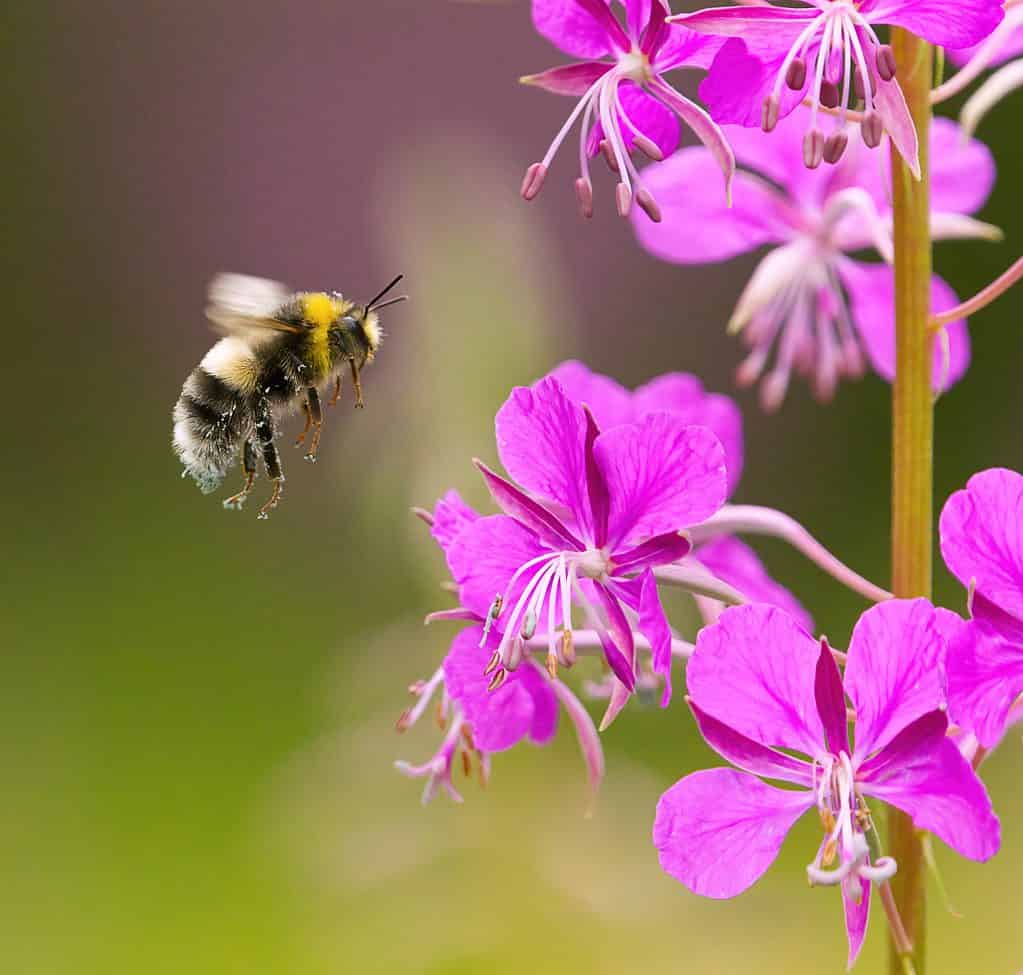
©Henri_Lehtola/Shutterstock.com
If you’re on the fence as to whether or not you’re the one to plant a bee garden or not, here are some benefits you’ll find may push you to the other side.
- Not only are you helping local crops and biodiversity and saving the bees themselves, you’ll find your own garden is healthier and happier with the bees present.
- The flowers that have healthy bees pollinating them are more vibrant and more plentiful.
- Many fruit trees produce more fruit (in some cases any fruit) when bees pollinate them.
- You’ll have less work to do in the garden.
- Bees help improve the air space around your home (thanks to plants thriving and therefore producing more oxygen).
- If you’re able to study the art of beekeeping and bring in your own hive, you’ll be able to enjoy some of the honey your buzzing neighbors produce.
How Do You Make a Bee Garden?
There are several things to consider as you plant and keep your bee or pollinator garden.
Choose the Right Plants

©Elliotte Rusty Harold/Shutterstock.com
First off, you need to choose the right plants, trees, and shrubs for your pollinator garden. There are several ways to choose these, but one of the most important is taking note of what is native to your area. We’ll share more below, but native plants are vital for attracting bees in your region.
Secondly, make sure the plants are the right colors. They are not attracted to all the same colors that humans like to plant. In fact, they don’t even see some colors, including red. Instead, they are attracted to blue, purple, yellow, and white flowers instead. Some shades of pink, if they are light enough, may also attract bees.
You’ll also want to make sure the plants are fragrant and plentiful. Many hybrid plants, for example, are sterile and therefor do not produce the nectar and pollen that bees collect.
Finally, choose a variety of flowering plants that work for a variety of bee species.
Grow the Plants in the Right Configuration
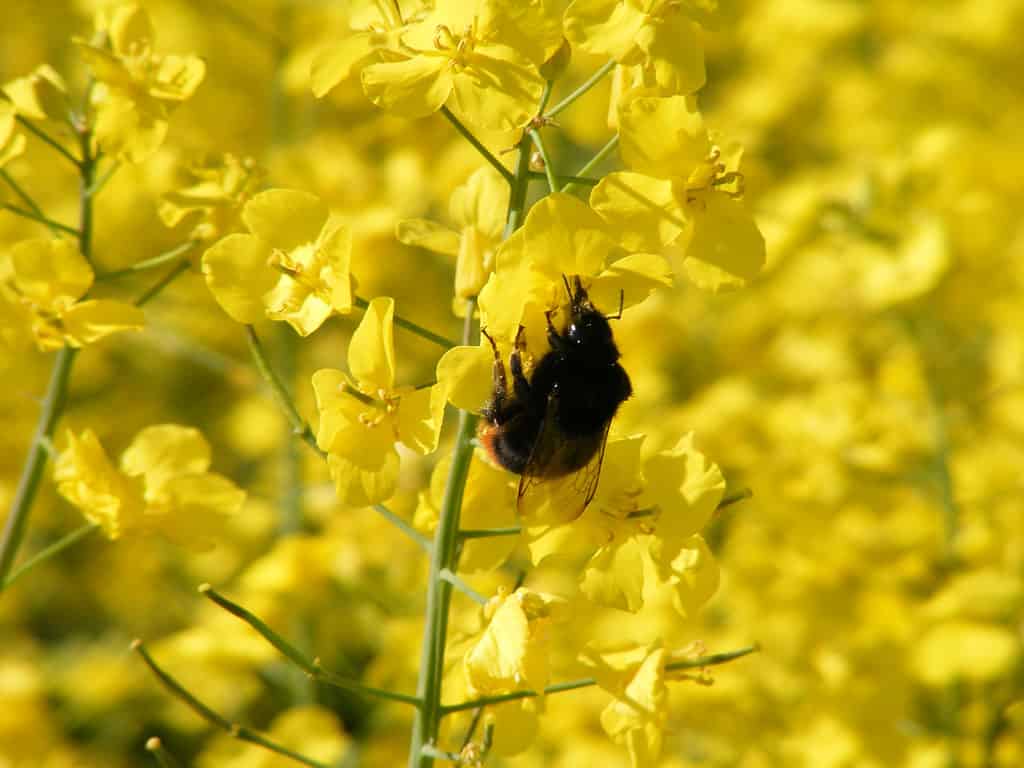
©ULD altmedia/Shutterstock.com
When it’s time to place your plants, be sure to group the same type of plants together. If you have the space, plant at least one square yard of the same plant together to provide loads of attractive plants to the bees. Cluster all the crocus together or plant a few honeysuckles side by side.
If you don’t have much space, you can still create a mini pollinator garden. Plant wildflower seeds around your shrubs or fill a window box with asters. If possible, plant a few containers worth of the flowers and place together.
Care Properly for the Garden Plants
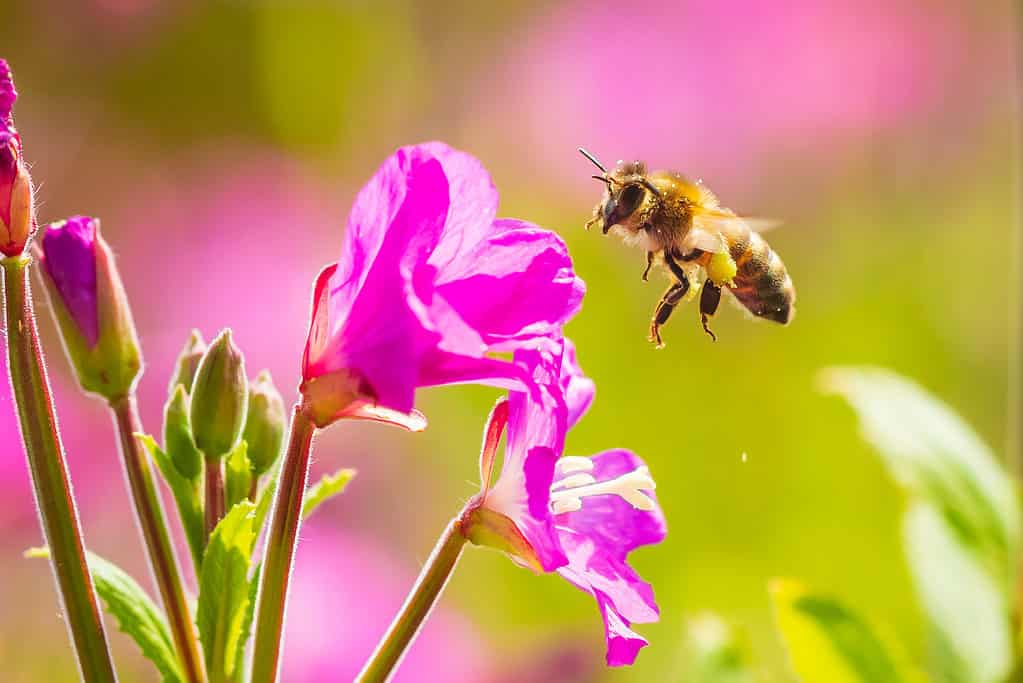
©SanderMeertinsPhotography/Shutterstock.com
Once you’ve planted the garden, it’s important to care properly for the plants. They have different light and shade needs, though most need shelter from direct sun in summertime. They need to be watered and, in some cases, fertilized with organic, natural fertilizers that won’t harm the bees that alight them.
Be sure to let the plants flower properly before deadheading them or trimming them. And if you’re growing plants like cauliflower or broccoli, harvest them, but leave the plants intact and them go to flower. Leave the plants in the garden until the flowers have disappeared, particularly plants that have late flowers in autumn into winter. These are vital for the survival of bees.
Provide Your Pollinator Garden with a Water Source
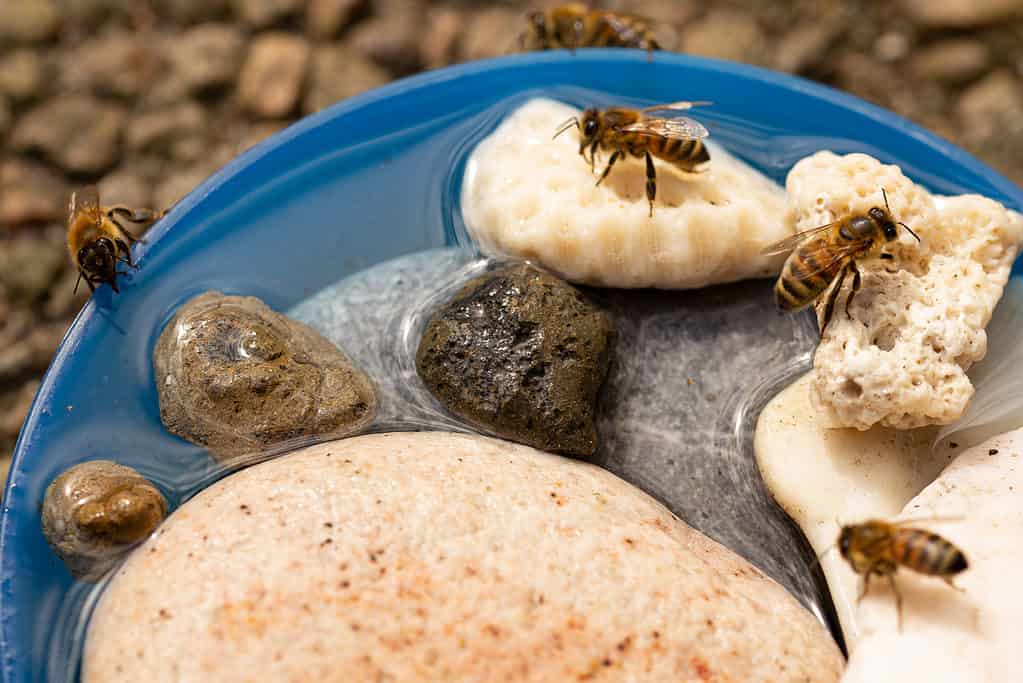
©BernadetteB/Shutterstock.com
Yes, all those plants need watering, but bees actually need a fresh, clean water source as well. A slanted birdbath is a great way to do this, or a small bowl or shallow planter filled with water will do as well. Bees need water to survive but the water needs to be shallow enough that they won’t drown or get caught in a wave.
Avoid Pesticides, Herbicides, and Fungicides

©FunFamilyRu/Shutterstock.com
If you’re trying to attract pollinators like bees and butterflies, it’s critical to avoid all types of chemicals. These can kill the bees that come to your plants for sustenance. Pesticides in particular are horrible for bees. Avoid herbicides, pesticides, fungicides, and all other “cides” to prevent the death of your bee pals as they make their way into your garden. These substances are also often carried back to the nests of bees and may kill off an entire hive, not just the unfortunate buzzer that landed on your lavender.
Be sure to keep your lawn, trees, and other surrounding plants free of these killers, as well.
And, instead, grow some plants surrounding your bee garden that help deter some of the pests that frequent most gardens. Think marigolds, eucalyptus, rosemary, and lemon balm to name a few.
Welcome Native Weeds
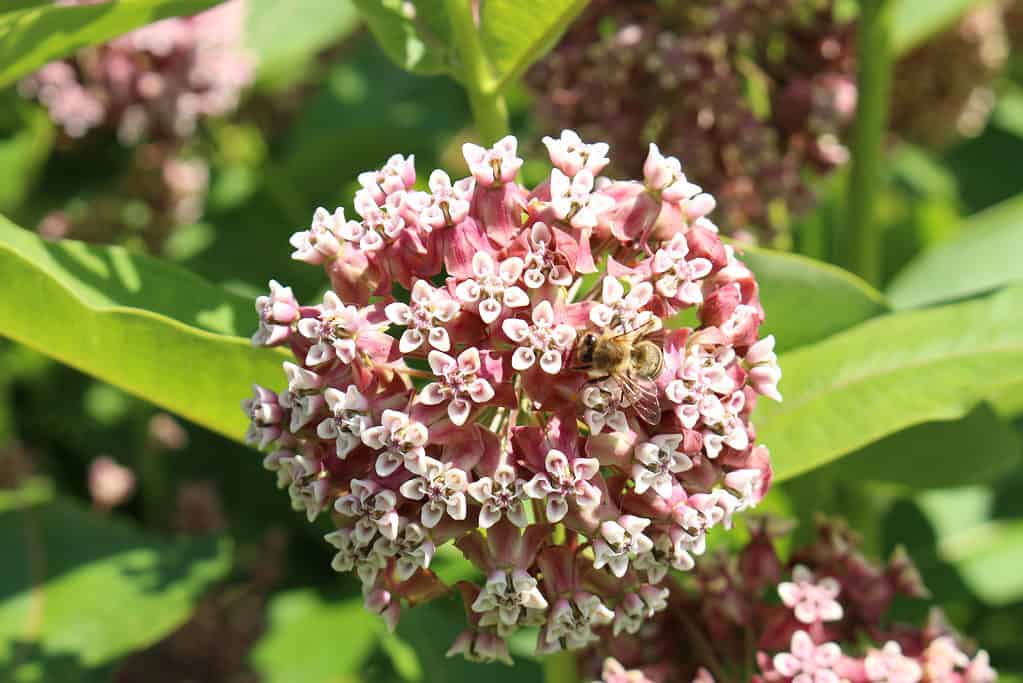
©iStock.com/mr_coffee
It might seem counterintuitive, but some native weeds are also attractive to our buzzing friends. Dandelions, for example, provide bees with some natural, easy food that. Milkweed and goldenrod are other favorites among bees and other pollinators. Let these colorful plants grow wild among your garden plants. You can even encourage them a bit by helping spread the dandelion seeds or replanting the milkweed in the garden where you’d like it.
Create Nesting Habitat(s)
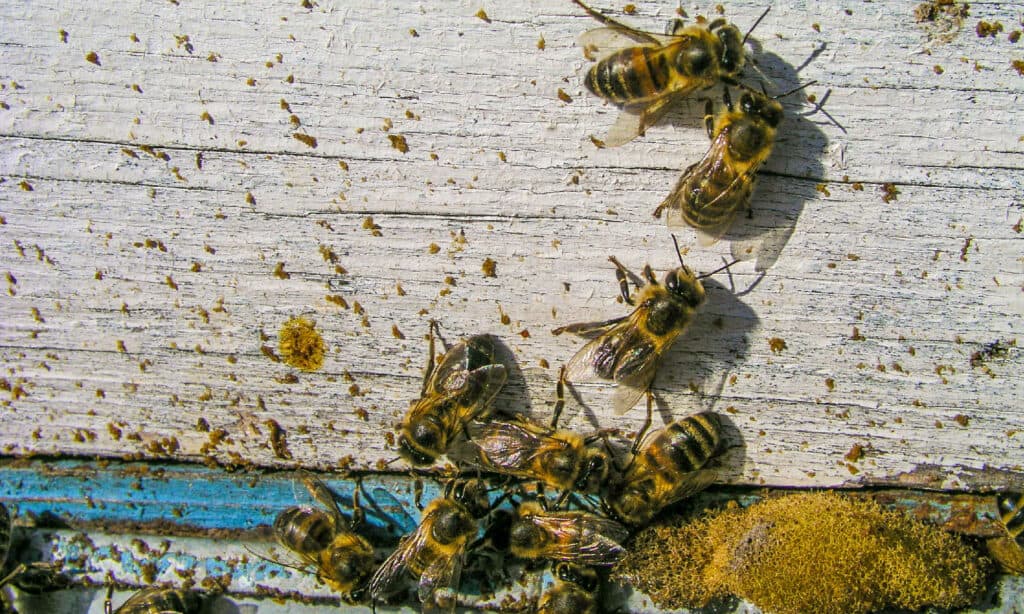
©Lipatova Maryna/Shutterstock.com
Most of us are not equipped to care for bees in our gardens, but another important element in your bee garden is creating intentional habitats and sheltering spaces for bees. And creating these nesting grounds is actually pretty easy.
The species of bee will determine the kind of nesting area they will use, but some basics include:
- Bumble bees: A sheltered space with insulating material, like a compost pile, piles of dried grass at the base of native grasses, or raised beds with hugelkultur
- Ground nesting bees: Between 60 and 70% of bee species are ground nesters. They need both disturbed and undisturbed soil, covered and bare soil, and zero pesticides to be able to build their shelters and thrive.
- Cavity nesting bees: The rest of the bee species build nests in hollows (cavitities) in trees, logs, etc. They are the ones that will take up residence in a human-built bee house. This is the easiest way to provide for these bee types.
How to Care for Your Bee Garden
Now that you know what to provide, let’s dig into how to care for that stunning bee garden.
Water Your Bee Garden
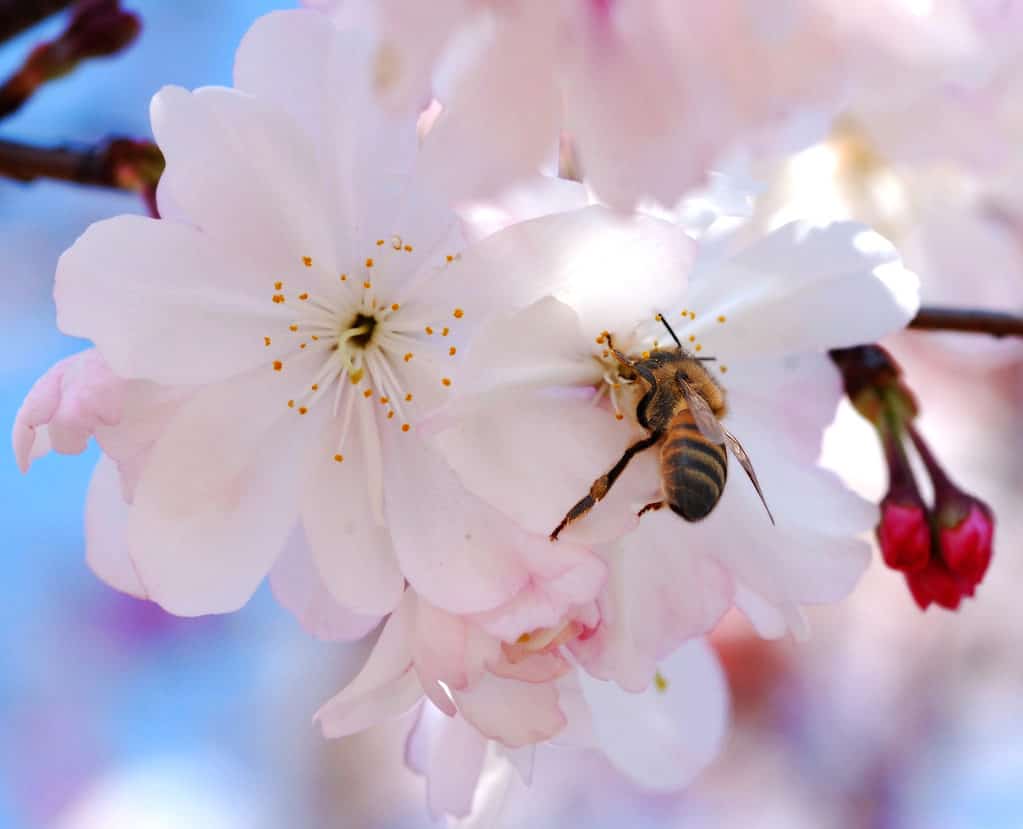
©iStock.com/mstroz
As you plan your watering schedule for the bee garden, remember to keep the water source for the bees in mind, as well, to ensure your plants and your buzzing pals are covered.
As to watering the plants, be sure to care for each as their species requires. Check the soil regularly and water accordingly, making sure you don’t let them dry out. If the plants dry out too much, the plants will suffer, and ultimately, so will the bees.
In most cases, watering your container garden may be done with a watering can or gentle hose nozzle. Bed or raised bed gardens usually require the gentle hose nozzle setting. Some plants may also require misting and extra watering, so be sure to keep this in mind as you plant.
Shelter Your Bee Garden
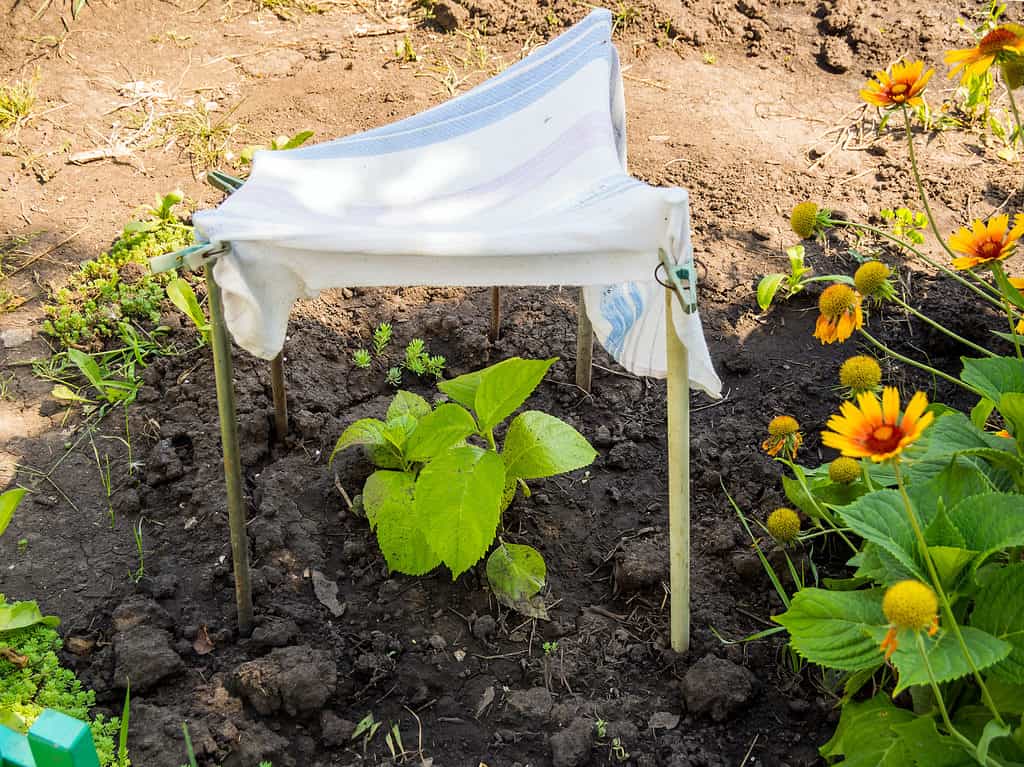
©VPales/Shutterstock.com
Bees and many plants also require shade shelter from hot summer sun or intense wind, snow, and heavy rainfall.
If you provide proper nesting habitat(s) for the bees in your area, this will mostly be covered. However, your plants will also potentially need some shade to keep them lively and thriving. Shade cloth is often used for plants that are located in regions or settings where direct afternoon sun is the only option. Additionally, you can add something like a privacy or shade screen that allows proper light during morning and evening hours while providing shade in the hottest hours of the day.
If you keep a container garden on your patio, porch, gazebo, or other structure, you may consider outdoor curtains, as well, as these can be easily drawn and withdrawn throughout the day, allowing seasonal needs to be met easily.
If you live in a high wind region, be sure that there are wind barriers around your plants and bee nesting habitats as well, else you might lose some of the flowers early or damage plants. Bees would also benefit from this wind screen or other protection.
How to Choose the Best Bee Garden Plants
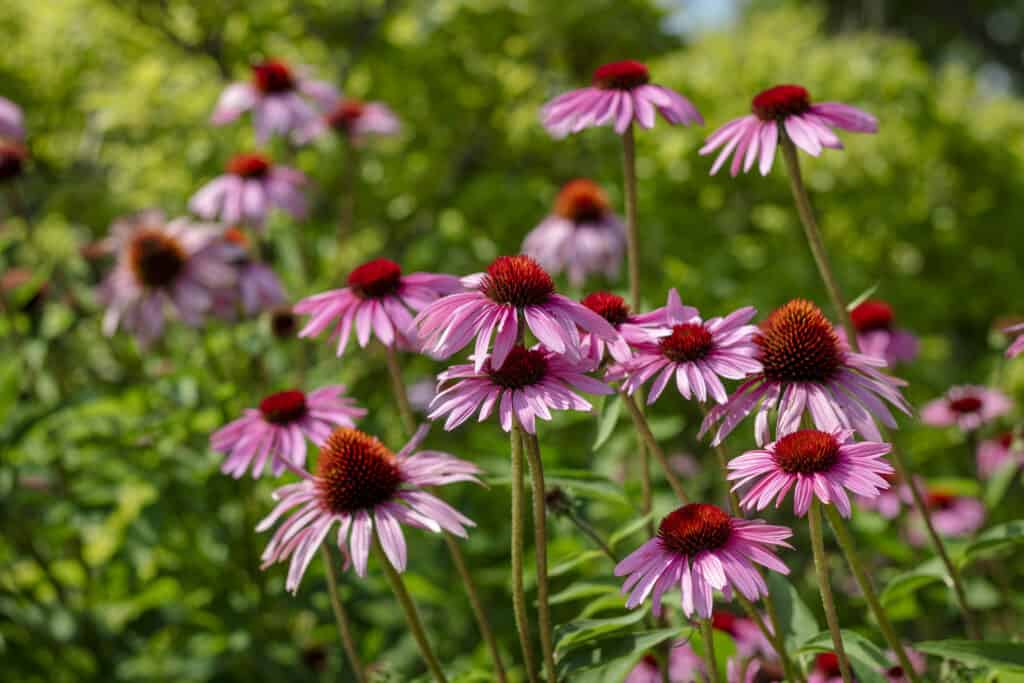
©iStock.com/Air Footy
There are many plants that attract bees that come in a wide range of colors, sizes, shapes, depths, and locality. Some of the best bee garden plants include:
- Crocus
- Catmint
- Foxglove
- Lavender
- Asters
- Coneflower
- Bee balm
- Pansies
- Chive flowers
- Creeping thyme
- Gladiolus
- Yarrow
- Coreopsis
- Anise Hyssop
- Heliotrope
- Sweet Alyssum
We’ve crafted a thorough article on these plants that may help you determine if any of these are a great choice for your bee garden or not.
Before you rush out and buy some of these to plant, though, there are several things to consider for your own garden.
Learn About the Types of Bees in Your Area
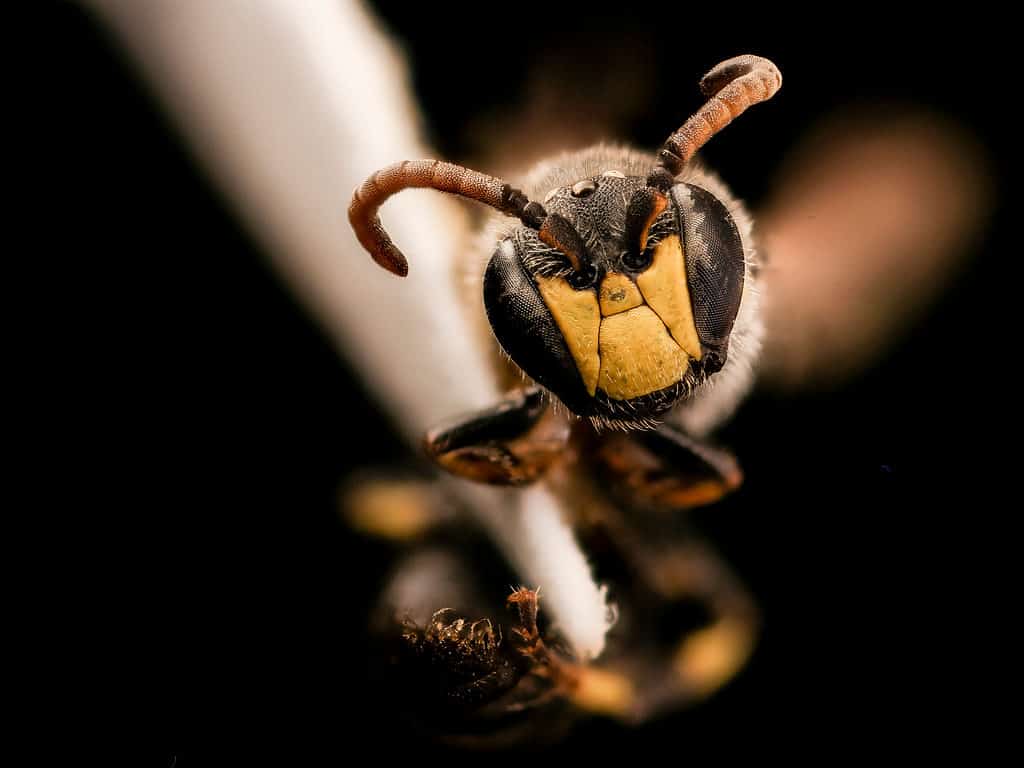
©Hello Adobe/Shutterstock.com
First off, there are a wide-range of bee species that may or may not be local to your region. You’ll want to learn about these before choosing your plants. Some plants attract these different types of bees because of the habitat, while others attract bees by tongue-length.
There are both long-tongued bees and short-tongued bees and flowers have different “depths” to them, meaning some have the nectar at shorter depths where short-tongued bees can access the sweetness, while others have to attract long-tongued bees.
Short-tongued bees
- Small miner bees
- Plasterer bees
- Sweat bees
- Yellow-faced or masked bees
- Adrenid bees
Long-tongued bees
- Honeybees
- Leaf-cutting bees
- Carpenter bees
- Digger bees
- Bumble bees
Grow Native Plants
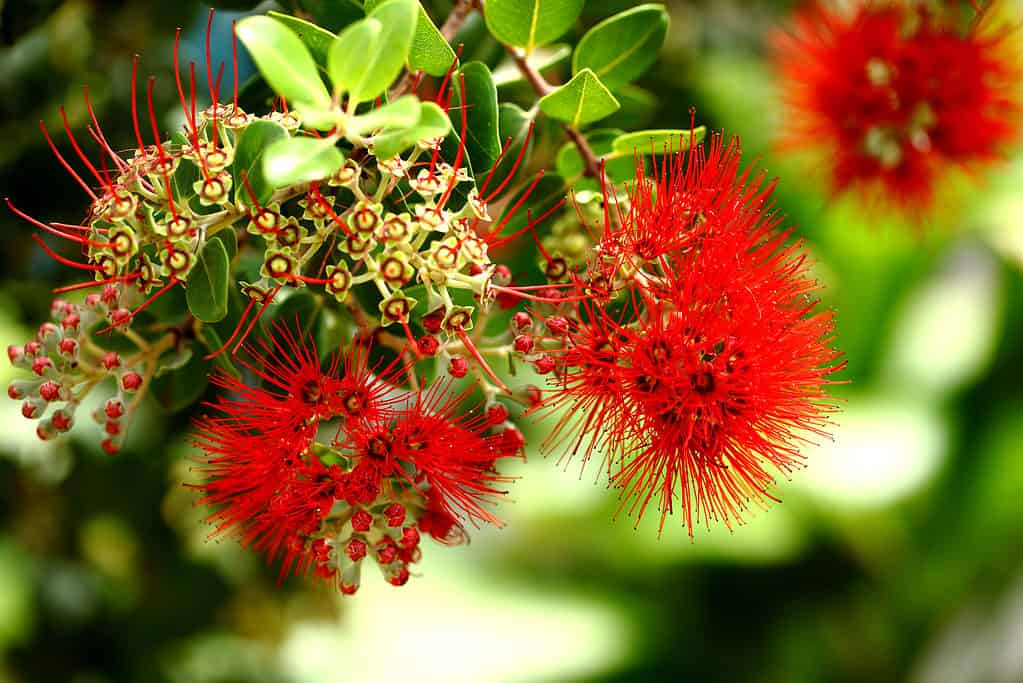
©Aaron Miyamoto/Shutterstock.com
As mentioned above, native plants are a vital part of growing the best possible bee garden. Native species can be defined as plants that naturally occur in the region without being introduced my humans. That is, you wouldn’t find Japanese cherry blossom trees in Michigan, USA, for example.
These plants have adapted and evolved to work well in the environment in which they do grow natively, so they are capable of thriving in the area. They also attract the native pollinators to the area, as well, whether it’s monarch butterflies to milkweed or honeybees to sunflowers.
Using only native plants will also help to make sure that they are competition with introduced species that may not do as well in the environment.
Choose Plants That Bloom from Spring to Autumn
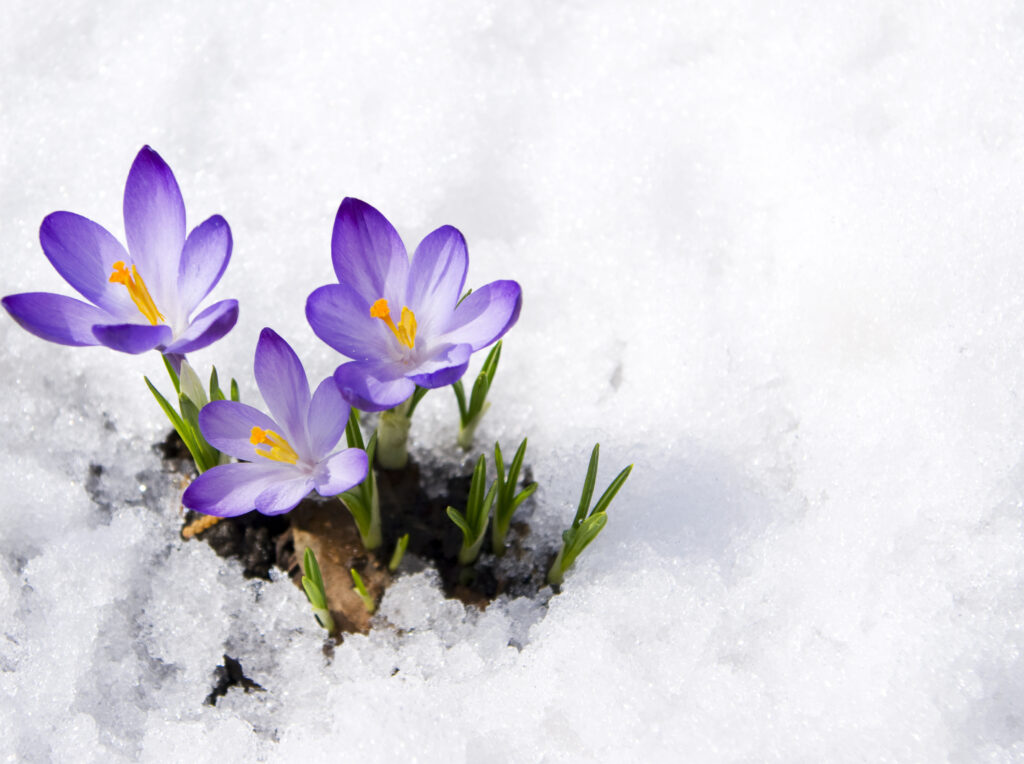
©Volkova Irina/Shutterstock.com
Many native plants only bloom for a single season, so the pollinating season might be short for your buzzing buddies. So, choose a variety of plants that bloom from spring to autumn, providing them with the longest pollinating season possible.
Review the native plants in your area and select those that you have growing conditions for (or can create) and choose some that will bloom in early spring, mid-to-late spring, early summer, late summer, autumn, and all the way up to the first frosts. This may well mean you’ll want to have a combination garden bed and container garden, ensuring the plants you choose have all the right growing conditions possible or to maximize your growing space.
And, if you live in regions where flowers can bloom year-round, choose some that bloom in wintertime in your area as well.
Determine the Needs of the Plants and Your Ability to Provide for Those Needs
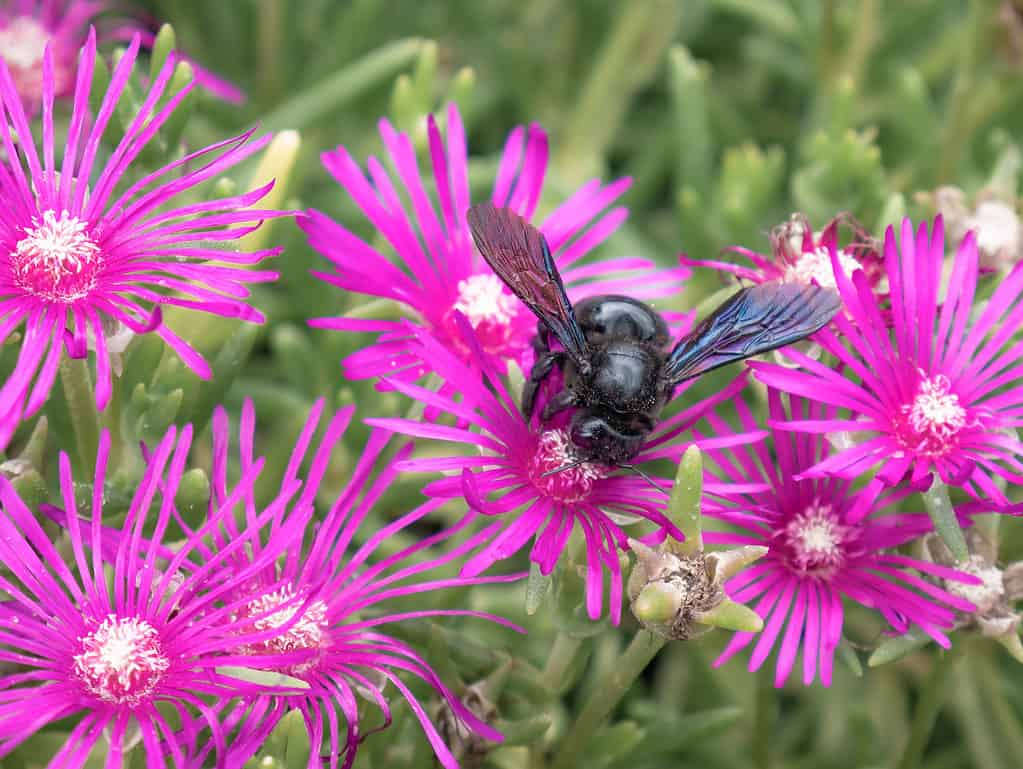
©iStock.com/Dudbrain
Finally, you also need to ensure that the plants you choose will be ones that you can provide for in your particular setting and your particular skill set and time constraints.
- Choose plants that will do well in your lighting situation – do you have shade or can you provide shade as necessary via shade cloth, curtains, or screens?
- Do you receive enough sunlight in the months the plants require more direct light (i.e., flowering and growing seasons)?
- Can you water the plants as frequently as they need without damaging your environment (i.e., if the plants need loads of water and you live in a drought-riddled area, you need to choose other plants, most likely)
- Do you have enough space for the given plants? Some plants do well in containers, others do not. Some need to spread out, like ground covers such as creeping thyme, while others may do well in more confined spaces.
- Is your region warm and/or humid enough for the plants?
- Does your region provide the proper dormant periods for perennials?
Bee Garden FAQs

©Olga S photography/Shutterstock.com
Do bee gardens attract other pollinators?
In most cases, bee gardens do attract other pollinators as well. To increase this attraction or home in on particular other species, choose flowering plants that attract your preferred butterfly, bird, and other species of animals and insects.
Is there a difference between a bee garden and a butterfly garden?
The differences between butterfly and bee gardens are the plants you provide. Basically, what you want to attract will determine the colors and types of plants you grow.
Up Next:
- Native Plants in Ohio
- Native Plants in Washington
- Native Plants in Nebraska
- Native Plants in Montana
The post What is a Bee Garden? Your Complete Guide to Pollinator Gardens appeared first on AZ Animals.
from Animal News, Facts, Rankings, and More! - AZ Animals https://ift.tt/rx9HKen